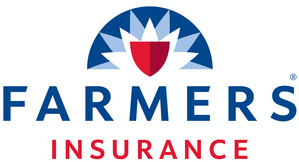WOODLAND HILLS, Calif., Sept. 4, 2018 /PRNewswire/ -- The United States saw $306 billion in damage as the result of natural disasters in 2017, making it the costliest year for damages on record, according to the National Centers for Environmental Information. Still, 60 percent of individuals surveyed didn't have a plan in place should disaster strike, according to data released by Farmers Insurance®. In an interesting turn, half of people surveyed who have experienced a natural disaster as an adult still do not have an emergency kit, and 55 percent of that same group don't have an emergency plan in place.
With National Preparedness Month having kicked off September 1, Farmers® has collected insights and tips to help people so they can prepare for whatever the future may hold. The infographic, available in its entirety at Farmers.com/prepare, notes that wildfires, hurricanes and tornadoes consistently rank among the principal concerns for U.S. residents, which should not come as a surprise considering that 70 percent of people surveyed have experienced some type of natural disaster as an adult. This increasing frequency and scale of damage may contribute to the 39 percent of individuals who don't feel confident that they could financially rebound from a natural disaster.
From emergency kit assembly to critical resources, this round-up of preparedness information is a good start for proactive individuals or families. The infographic collects practical recommendations as well as survey information that sheds additional light on disaster impact and preparedness throughout the country.
- Millennials2 are the most likely generation to have an emergency plan (44 percent) and kit (49 percent). Comparatively, 41 percent of baby boomers have a kit and just 38 percent have a plan
- Among the individuals with emergency kits who have pets, 35 percent have nothing for their pets in the kit, while 30 percent have pet-specific kits
- Relatively few individuals consider medical prescriptions (27 percent) and important documents such as passports (15 percent) among the most important items to include in an emergency kit. Eighty-two percent cited food and water as critical kit elements.
Click to tweet: 60% of individuals and families didn't have an emergency plan. @WeAreFarmers has a guide to help you assemble yours and weather the storm. #Prepared https://www.farmers.com/prepare
"As insurers, we see the aftermath of damaging storms and wildfires up-close and personal and we know that preparation can help make a difference," said Jarrod Murrieta, head of claims catastrophe response with Farmers Insurance. "Even though we can't stop the wind from blowing or in some cases fires from spreading, we hope these tips can help others stay as safe as possible if the worst does happen."
Disaster preparedness is often overlooked, but our inability to control the weather doesn't mean that we're powerless in the face of major weather events. Here are a few preparedness next steps you can take (more tips and information available at Farmers.com/prepare):
- Be Proactive: To start, prepare an emergency kit with necessary supplies, food and medicine and make a communication plan. Identify your area's evacuation routes to determine where your family will meet, and how everyone will get there, should you need to evacuate.
- Listen Carefully: Having as much advance warning as possible before a severe weather situation is critical. Become familiar with your community's early warning system, and make sure all family members know what to do when an alarm sounds.
- Know Your Neighbors: There really can be safety in numbers. Join (or start) a neighborhood organization so residents can communicate and share emergency resources, such as generators or chainsaws, if need be.
- Research Your Local Risks: Learn about the possible emergencies that are more likely to happen in your region and how best to respond to them. Educate yourself as well about emergency plans that have been established in your area by your state and local government. Knowing what to do during an emergency is an important part of being prepared.
- Inspect and Protect: Once the storm has passed and you've checked in with family and friends, the next step is to call your insurance agent to report any property damage. If it is safe to do so, you can help protect your property from any further damage by making emergency repairs to your home. This could include boarding up windows, putting a tarp on the roof, and salvaging undamaged items.
About Farmers Insurance
"Farmers Insurance®" and "Farmers®" are tradenames for a group of affiliated insurers providing insurance for automobiles, homes and small businesses and a wide range of other insurance and financial services and products. Farmers Insurance is proud to serve more than 10 million households with over 19 million individual policies nationally through the efforts of more than 48,000 exclusive and independent agents and approximately 21,000 employees. Farmers Insurance Exchange, the largest of the three primary insurers that are part of the Farmers Insurance Group of Companies®, is recognized as one of the largest U.S. companies on the 2018 Fortune 500 list.
For more information about Farmers Insurance, visit Farmers.com, Twitter and Instagram, @WeAreFarmers, or Facebook.com/FarmersInsurance.
| 1 This Farmers Insurance disaster preparedness survey, which was live on July 19-25, 2018, was conducted among a sample of 2,007 adults comprising 1,004 men and 1,003 women 18 years of age and older. |
| Contact: |
Media Relations |
SOURCE Farmers Insurance
Related Links
WANT YOUR COMPANY'S NEWS FEATURED ON PRNEWSWIRE.COM?
Newsrooms &
Influencers
Digital Media
Outlets
Journalists
Opted In





Share this article